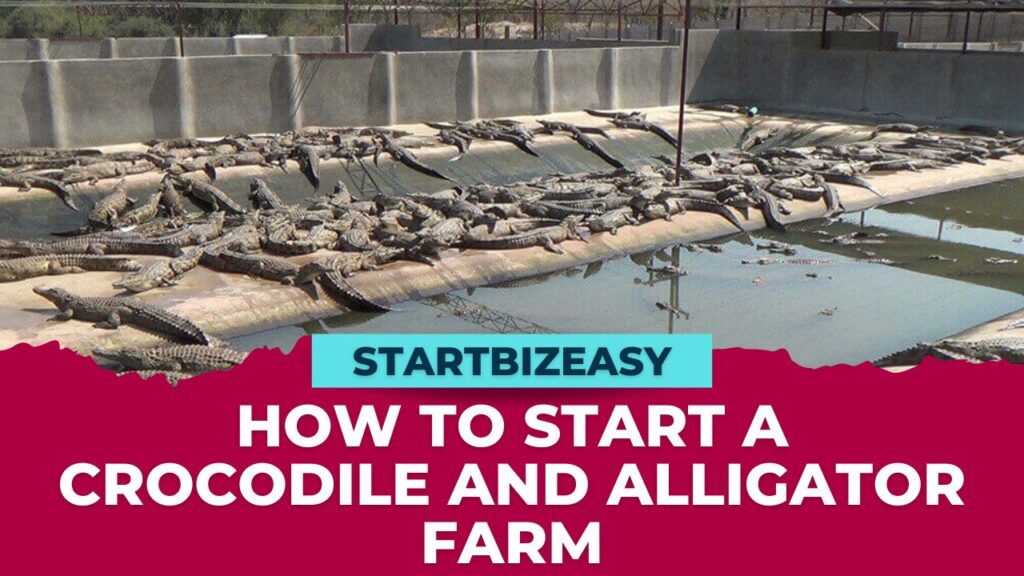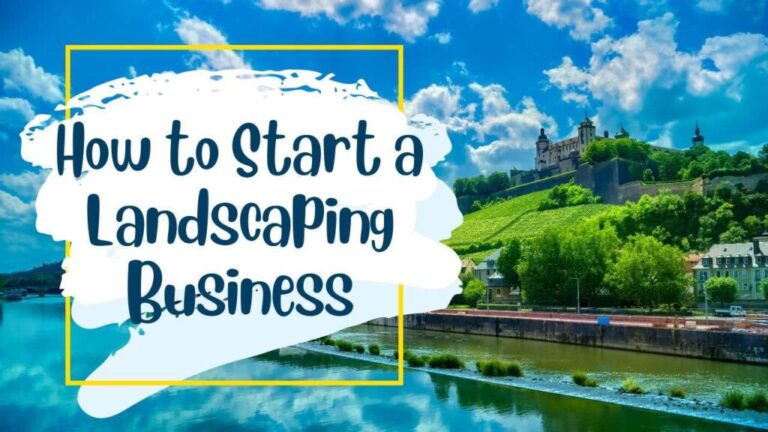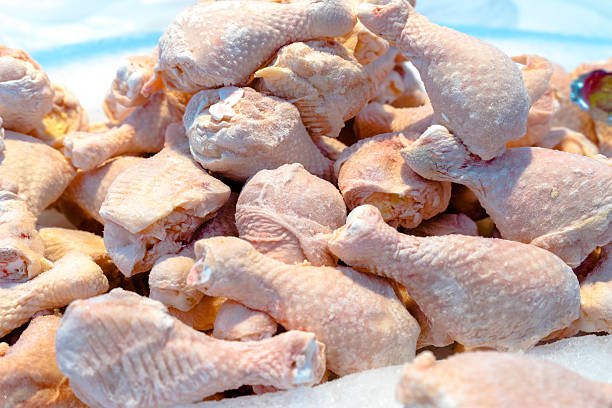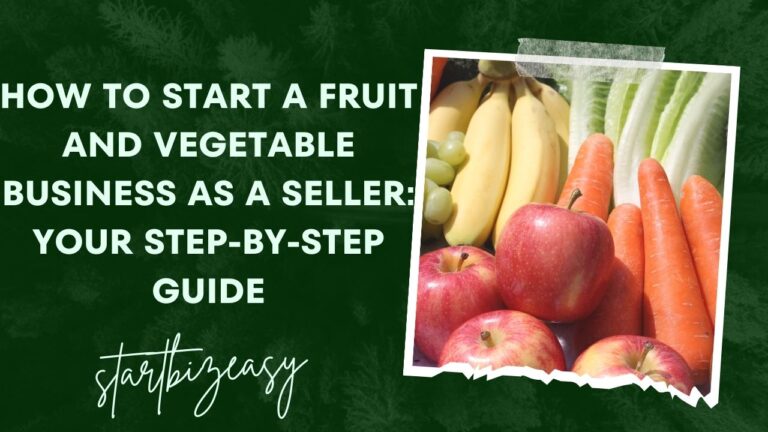
A crocodile and alligator farm is a facility where these reptiles are bred, raised, and sometimes harvested for various purposes. These farms serve multiple functions, including conservation efforts, research, tourism, and commercial use.
In terms of conservation, some farms focus on breeding these species to maintain genetic diversity and support wild populations. They may also conduct research on crocodilian behavior, physiology, and ecology.
Many crocodile and alligator farms are open to the public as tourist attractions and educational facilities. Visitors can observe these creatures up close, learn about their biology and habitat, and sometimes even participate in feeding or handling sessions under supervision.
In some cases, crocodile and alligator farms are operated for commercial purposes. The animals may be raised for their meat, skins, and other products. Crocodile leather, in particular, is highly valued for its durability and exotic appearance.
Additionally, in regions where crocodiles or alligators pose a threat to human populations or livestock, farms may be established to capture and relocate these animals, helping to mitigate conflicts between humans and wildlife.
However, it should be noted that crocodiles and alligators generally do not coexist in the same habitats in the wild, as they have different environmental preferences and behaviors. Alligators prefer freshwater environments like swamps, marshes, lakes, and rivers, while crocodiles are typically found in brackish or saltwater habitats such as mangrove swamps, estuaries, and coastal areas.
In captivity (ie Farm), it is possible to house crocodiles and alligators together in the same pond or enclosure if certain conditions are met.
These conditions include providing ample space, appropriate environmental conditions (such as temperature and water quality), and ensuring that there are no aggressive interactions between individuals.
However, mixing crocodiles and alligators in captivity requires careful management and monitoring to prevent any potential conflicts or harm between the animals.
Here is how you can start a Crocodile and Alligator Farm:
Table of Contents
1. Decide on the Type of Farm you want to Start:
When starting a crocodile and alligator farm, it’s crucial to define the main purpose behind it. This decision will significantly influence how you set up and run your farm. Here’s why:
If your primary aim is conservation, your farm will focus on breeding programs aimed at preserving genetic diversity and supporting wild populations. You’ll likely need specialized facilities that mimic natural habitats to ensure the well-being of your animals. Additionally, your marketing strategy will emphasize your farm’s role in species preservation, targeting organizations and individuals interested in wildlife conservation efforts.
Alternatively, if research is your main focus, your farm will prioritize scientific investigations into crocodilian behavior, physiology, and ecology. Your facilities will include laboratories and research ponds equipped with monitoring equipment. Marketing efforts will target academic institutions, government agencies, and research collaborators seeking insights into these fascinating creatures.
For those interested in tourism, the farm experience becomes more about providing engaging and educational experiences for visitors. Facilities will include visitor centers, guided tour routes, and interactive exhibits. Marketing strategies will aim to attract tourists, offering unique experiences and emphasizing the educational value of visiting your farm.
On the other hand, if commercial use is your goal, your farm will center on breeding crocodiles and alligators for their valuable products such as leather, meat, or other by-products. You’ll need processing facilities and storage areas for harvested products. Marketing efforts will target luxury fashion brands, exotic meat markets, and other potential buyers interested in these products.
Some farms may choose to combine elements of conservation, research, tourism, and commercial use. In this case, flexibility is crucial in balancing the different goals and ensuring the farm’s success. Facilities and breeding programs may need to adapt to accommodate multiple purposes, and marketing strategies will target diverse audiences interested in various aspects of the farm.
Ultimately, the type of farm you decide to start will shape every aspect of your operation, from the design of your facilities to your breeding program and marketing efforts. Clarifying your primary focus will guide your decision-making process and ensure that your farm aligns with your goals and values.
2. Get Trained or a Trainer:
Before diving into the world of crocodile and alligator farming, it’s essential to gain a solid understanding of how to care for these reptiles properly. This involves seeking training from experienced professionals or hiring a trainer who specializes in crocodile and alligator husbandry.
Why is this important? Well, these reptiles have unique behaviors, biological traits, and specific needs that must be understood to ensure their welfare and the success of your farm.
By learning from experienced professionals or hiring a trainer, you’ll gain valuable insights into:
- Behavior: Understanding the behavior of crocodiles and alligators is crucial for their management and handling. This includes knowing how they interact with their environment, their social dynamics, and how they respond to different stimuli.
- Biology: Familiarizing yourself with the biology of crocodiles and alligators will help you provide appropriate care for them. This includes knowledge of their anatomy, physiology, and reproductive biology.
- Specific Needs: Crocodiles and alligators have specific requirements for habitat, diet, water quality, and temperature. Learning how to meet these needs effectively is essential for their health and well-being.
By investing time and effort in gaining expertise in crocodile and alligator husbandry, you’ll be better equipped to provide optimal care for these reptiles on your farm. This not only ensures their welfare but also enhances the overall success and sustainability of your farming operation.
3. Location:
Selecting the right location for your crocodile and alligator farm is crucial to its success.
Firstly, consider the climate of the region. Crocodiles and alligators are cold-blooded reptiles, meaning they rely on external sources of heat to regulate their body temperature. Therefore, choosing a location with a climate that closely matches their natural habitat is essential for their health and well-being.
Additionally, access to water sources is vital. Crocodiles and alligators are semi-aquatic animals that require ample water for swimming, hunting, and thermoregulation. Therefore, selecting a location near a reliable water source, such as a river, lake, or pond, is necessary for creating suitable habitats for these reptiles.
Furthermore, proximity to markets or tourist attractions can impact the success of your farm. If you plan to sell crocodile leather, meat, or other products, being close to potential buyers can streamline distribution and reduce transportation costs. Similarly, if you intend to attract visitors to your farm for tourism purposes, choosing a location near popular tourist destinations can increase foot traffic and revenue.
Lastly, ensure compliance with local regulations and zoning requirements for keeping exotic animals. Different regions may have specific laws governing the ownership and management of crocodiles and alligators, including permits, enclosure standards, and safety regulations. Failure to comply with these regulations can result in legal issues and jeopardize the operation of your farm.
By carefully considering these factors and selecting a location that meets the needs of your crocodile and alligator farm while adhering to local regulations, you can lay the foundation for a successful and sustainable business venture.
4. Facilities:
Creating suitable facilities for your crocodile and alligator farm is essential for the well-being of these reptiles and the success of your operation.
Firstly, invest in secure enclosures to ensure the safety of both the animals and any visitors or staff. Crocodiles and alligators are powerful predators and can be dangerous if not properly contained. Secure fencing and barriers are necessary to prevent escapes and protect against unauthorized access.
Secondly, provide spacious ponds or pools with appropriate water quality and temperature control. Crocodiles and alligators are semi-aquatic animals that require access to water for swimming, hunting, and thermoregulation. Designing large, naturalistic ponds or pools with clean water and adequate filtration systems is essential for maintaining their health and well-being.
Temperature control is also crucial, as crocodiles and alligators rely on external sources of heat to regulate their body temperature. Ensure that the water temperature remains within a suitable range for the species you are housing, and provide additional heating or cooling options as needed to accommodate seasonal variations.
Additionally, provide shelters for basking and nesting. Crocodiles and alligators require dry, elevated areas where they can rest, bask in the sun, and lay their eggs. Design shelters such as artificial basking platforms or nesting mounds within the enclosures to mimic their natural habitat and provide opportunities for natural behaviors.
By investing in secure enclosures and facilities tailored to the needs of crocodiles and alligators, you can create a safe and comfortable environment for these reptiles to thrive. This not only ensures their well-being but also enhances the educational and recreational experiences for visitors to your farm.
5. Stock acquisition:
Acquiring crocodiles and alligators for your farm is a crucial step that requires careful consideration of both the health and legal aspects. Here’s why it’s important and what it involves:
Firstly, it’s essential to source healthy animals to ensure the well-being of your farm’s population. This means obtaining crocodiles and alligators that are free from diseases, genetic defects, or other health issues. Working with reputable breeders, wildlife sanctuaries, or captive breeding programs increases the likelihood of acquiring healthy specimens with proper documentation of their health history.
Secondly, it’s imperative to obtain crocodiles and alligators legally and ethically. This involves adhering to all relevant laws and regulations governing the trade and transportation of these animals. Depending on your location, there may be specific permits or licenses required for the acquisition and ownership of crocodiles and alligators. Ensuring compliance with these legal requirements helps prevent legal issues and contributes to the conservation of wild populations.
Additionally, it’s essential to consider the ethical implications of acquiring crocodiles and alligators. Avoid supporting illegal wildlife trade or practices that harm wild populations. Instead, prioritize sourcing animals from sustainable and responsible sources that prioritize animal welfare and conservation.
6. Feeding and Care:
Crocodiles and alligators have specific nutritional requirements that must be met to ensure their health and well-being. Developing a feeding regimen tailored to these needs is essential for their proper growth and development. Typically, their diet consists of a combination of fish, meat, and specialized supplements to provide the necessary nutrients.
It’s crucial to maintain proper hygiene standards within the enclosures or ponds where the reptiles are housed. Regular cleaning and disinfection help prevent the spread of diseases and parasites. Additionally, implementing veterinary care protocols, including regular check-ups and vaccinations, can further safeguard against health issues.
7. Breeding Program:
Establishing a successful breeding program requires careful planning and management. Begin by selecting breeding pairs based on factors such as genetic diversity, health, and temperament. Monitor the reproductive cycles of the animals closely, as they can vary depending on species and environmental conditions.
Provide suitable nesting areas within the enclosures for egg-laying females. Monitor the nests regularly to ensure the eggs are incubated properly and protected from predators. Once the eggs hatch, provide appropriate care for the hatchlings, including feeding and monitoring their growth.
Keep detailed records of breeding outcomes, including the number of eggs laid, hatch rates, and the health of the offspring. This information is valuable for tracking the success of the breeding program and making informed decisions about future breeding pairs.
In general, crocodiles and alligators often breed during the warmer months of the year when temperatures are conducive to mating and nesting. For example, in tropical regions, breeding may occur year-round, while in temperate climates, it may be more concentrated in the spring and summer months.
During the breeding season, males may become more aggressive and territorial as they compete for mating opportunities with females. Female crocodiles and alligators typically build nests and lay their eggs in secluded areas near water, where the eggs can be protected and incubated.
The incubation period for crocodile and alligator eggs can vary depending on species, environmental conditions, and incubation temperature. On average, it takes approximately 55 to 90 days for the eggs to hatch. Factors such as temperature and humidity play critical roles in determining the incubation period.
During incubation, the female may remain near the nest to guard it from predators and regulate the temperature by adding or removing vegetation. Once the eggs hatch, the hatchlings emerge from the nest and make their way to the water, where they begin their journey to adulthood.
8. Marketing and Sales:
To effectively market and sell your farm’s products or services, like exotic meats, luxury leather goods, or educational tours, you’ll need a comprehensive strategy.
First, identify your target markets. For exotic meats, consider gourmet restaurants, specialty food retailers, and adventurous consumers. Luxury leather goods might appeal to high-end fashion houses, luxury retailers, and discerning consumers. Educational tours could attract tourists, wildlife enthusiasts, and educational institutions.
Next, tailor your marketing efforts to each target market. Showcase the uniqueness and quality of your meats for food enthusiasts, emphasizing ethical sourcing practices and nutritional benefits. For luxury leather goods, highlight craftsmanship, exclusivity, and luxury appeal to appeal to affluent consumers. And for educational tours, promote the educational value and immersive experiences to attract tourists and educational groups.
When it comes to sales channels, choose the most effective ones for reaching your target markets. For exotic meats, partner with specialty food distributors, butcher shops, and restaurants, and consider offering online ordering and delivery services. Luxury leather goods could be sold through collaborations with luxury retailers, department stores, and online platforms, with a focus on exclusivity and personalized services. And for educational tours, work with tour operators, travel agencies, and eco-tourism organizations, offering customizable packages and group discounts to attract tourists and educational groups.
Finally, leverage online platforms, trade shows, and networking opportunities to expand your reach and connect with potential customers and partners. Maintain a strong online presence through social media and digital advertising, participate in trade shows and industry events to showcase your offerings, and build relationships with key stakeholders in your industry through networking events and collaborations.
By developing a targeted marketing strategy and utilizing various sales channels and networking opportunities, you can effectively promote your farm’s products or services and achieve success in your chosen niche markets.
9. Risk Management:
Managing risks is crucial for the success of your crocodile or alligator farm. Here’s how you can do it:
First, identify potential threats to your farm, such as disease outbreaks, natural disasters, or regulatory issues. Understanding these risks allows you to develop a plan to mitigate them.
Next, implement measures to address these risks. For disease outbreaks, establish strict biosecurity protocols to prevent the spread of illness among your animals. This might include quarantine procedures and regular health monitoring. Additionally, consider investing in insurance coverage tailored to your farm’s needs to protect against property damage, liability claims, and loss of livestock.
In the event of a natural disaster, have contingency plans in place. Develop protocols for evacuating animals safely and securing your facilities. Stay informed about industry trends and regulatory changes that could affect your farm, and adapt your risk management strategies accordingly.
By being proactive and prepared, you can effectively manage risks and ensure the long-term success of your crocodile or alligator farm.
Types of Crocodiles and Alligators that can be Farmed
Several species of crocodiles and alligators are commonly farmed for various purposes. Some of the most notable species include:
- American Alligator (Alligator mississippiensis): Native to the southeastern United States, the American alligator is one of the most widely farmed species. Its hide is highly valued for leather products, and it is also raised for meat and tourism.
- Nile Crocodile (Crocodylus niloticus): Found throughout much of sub-Saharan Africa, the Nile crocodile is one of the largest crocodilian species. It is commonly farmed for its skins, which are used in the fashion industry, as well as for meat and tourism.
- Saltwater Crocodile (Crocodylus porosus): Native to parts of Southeast Asia and northern Australia, the saltwater crocodile is the largest living reptile species. It is farmed for its skins, which are prized for their quality and used in luxury goods, as well as for meat and tourism.
- African Dwarf Crocodile (Osteolaemus tetraspis): This smaller crocodile species is native to the rainforests of West and Central Africa. While not as commonly farmed as larger species, it is occasionally bred in captivity for conservation, research, and educational purposes.
- Chinese Alligator (Alligator sinensis): Endemic to China, the Chinese alligator is a critically endangered species. Efforts to breed and conserve this species in captivity are ongoing, with some farms dedicated to its preservation.
These are just a few examples of the crocodile and alligator species that are farmed for various purposes around the world. Each species has its own unique characteristics and requirements for successful breeding and husbandry.
Can Crocodiles Survive Without Meat?

Crocodiles are carnivorous reptiles, meaning they primarily eat meat. While they can survive for a period without food, a diet lacking in meat would not support their long-term health and well-being. Meat provides essential nutrients, proteins, and fats that crocodiles require for growth, energy, and overall metabolic function.
In the wild, crocodiles hunt a variety of prey, including fish, amphibians, birds, mammals, and even other reptiles. Their diet may vary depending on their habitat, size, and availability of prey species. In captivity (ie farm), it’s essential to replicate their natural diet as closely as possible to ensure their nutritional needs are met.
Attempting to feed crocodiles a diet devoid of meat would likely lead to malnutrition, developmental issues, and overall health problems. Therefore, it’s crucial to provide crocodiles with a balanced diet that includes appropriate sources of meat to support their physiological requirements and maintain their health in the farm.
How to Raise a Crocodile and/or Alligator
Raising a crocodile and/or Alligator is a complex endeavor that demands careful attention to various aspects of their care. Firstly, it’s crucial to provide a suitable habitat mimicking their natural environment. This includes creating an enclosure or pond with both land and water areas, ensuring it’s secure to prevent escapes.
Temperature and humidity levels must be maintained within the enclosure to support the crocodile’s and alligator’s thermoregulation needs. This involves establishing a temperature gradient with warmer basking areas and cooler spots, as well as monitoring humidity to prevent dehydration.
Diet plays a significant role in the health of crocodiles and alligators. Their diet should consist of a variety of protein sources such as fish and meat to ensure proper nutrition. Feeding habits should be monitored closely to prevent overfeeding or malnutrition.
Enrichment activities are essential to stimulate the crocodile’s and alligator natural behaviors. This includes providing opportunities for hunting, basking, and exploring through the introduction of hiding spots, floating toys, and other environmental stimuli.
Regular observation of the crocodile’s and alligator’s health and behavior is necessary to detect any signs of illness or distress. Any changes in appetite, behavior, or appearance should be noted, and veterinary attention sought if necessary.
When handling crocodiles, and alligators caution must be exercised due to their potentially dangerous nature. Proper safety protocols should be followed to minimize the risk of injury to both the handler and the crocodile.
Additionally, legal requirements regarding the ownership and care of crocodiles and alligators must be adhered to. This includes obtaining permits or licenses as required by local, state, and federal regulations, and staying informed about any relevant laws or changes that may impact crocodile-raising activities.
Overall, raising a crocodile and alligator requires dedication, expertise, and a commitment to providing optimal care and enrichment for these fascinating reptiles.
How Fast do Crocodiles and Alligators Grow?
Crocodiles and alligators grow at varying rates depending on factors such as species, environmental conditions, and food availability. However, in general, they tend to grow relatively slowly compared to other animals.
During their first few years of life, crocodiles and alligators experience rapid growth, with juveniles typically growing several inches or centimeters each year. However, as they mature, their growth rate slows down significantly.
On average, crocodiles and alligators can reach maturity and full adult size anywhere from 8 to 15 years, depending on the species. Some larger species, such as the saltwater crocodile, may take even longer to reach full maturity.
The growth rate of crocodiles and alligators also varies depending on factors such as food availability and environmental conditions. The. ones that have access to abundant food resources and optimal habitat conditions may grow faster than those in less favorable environments.
How fast the crocodiles and alligators grow might not affect when you harvest them. It depends on why you’re farming them in the first place.
Crocodiles and alligators are typically harvested for their skins when they reach maturity and have developed sufficiently large and high-quality hides. This usually occurs when they are several years old, depending on the species and growth rate. For example, some species may be harvested for their skins at around 6 to 8 years of age, while others may require longer to reach the desired size and quality.
For meat production, crocodiles and alligators may be harvested at different stages of their growth, depending on the preferences of the market and the farming practices employed. In some cases, animals may be harvested as juveniles for their meat, while in other cases, they may be allowed to grow to a larger size before harvesting.
It’s important to adhere to legal and ethical guidelines when harvesting crocodiles and alligators to ensure the sustainability of wild populations and the humane treatment of farmed animals. Additionally, proper handling and processing techniques are essential to maintain the quality of harvested products and meet market standards.
Overall, crocodiles and alligators become capable of breeding (reach sexual maturity) at around 6 to 10 years of age, depending on the species and environmental conditions. After reaching maturity, their growth rate slows significantly, and they continue to grow at a slower pace throughout their adult lives.
How do you make a Crocodile and Alligator Farm?
Creating a crocodile and alligator farm requires careful planning of the structures and facilities to ensure the well-being of the animals and efficient operations. Here’s how to design the layout:
- Enclosures or Ponds: Construct secure enclosures or ponds that provide ample space for the crocodiles and alligators to swim, bask, and move around freely. The size of the enclosures will depend on the number and size of the animals you plan to keep. Ensure the enclosures have both land and water areas to accommodate the reptiles’ natural behaviors.
- Fencing and Security: Install sturdy fencing around the perimeter of the farm to prevent escape and unauthorized access. Use materials such as chain-link or reinforced steel fencing that are resistant to damage from the animals. Implement security measures such as locks and surveillance cameras to protect the facility from intruders.
- Temperature Control: Incorporate temperature control systems to maintain optimal environmental conditions for the crocodiles and alligators. This may include heating elements for maintaining water temperature and providing heated basking areas, as well as cooling systems to prevent overheating during hot weather.
- Shade Structures: Provide shaded areas within the enclosures where the crocodiles and alligators can retreat from direct sunlight. Construct shade structures such as awnings, shelters, or natural vegetation cover to protect the animals from excessive heat and UV radiation.
- Feeding Stations: Design feeding stations or platforms where you can safely distribute food to the crocodiles and alligators. Ensure these areas are easily accessible for feeding staff and allow for proper monitoring of feeding behavior.
- Nesting Areas (Optional): If your farm includes breeding programs, create suitable nesting areas within the enclosures where female crocodiles and alligators can lay their eggs. Provide nesting materials such as sand or soil and incorporate structures to protect the nests from disturbance.
- Water Filtration and Treatment: Install water filtration and treatment systems to maintain water quality and hygiene within the enclosures. This may include mechanical filters, biological filtration units, and UV sterilizers to remove debris and harmful pathogens from the water.
- Visitor Facilities (Optional): If you plan to offer educational tours or public viewing areas, design visitor facilities such as observation decks, viewing platforms, and educational exhibits. Ensure these areas are safely separated from the animal enclosures and provide amenities such as restrooms and seating for visitors.
- Storage and Maintenance Areas: Allocate space for storage and maintenance of equipment, supplies, and feed. Construct storage sheds or buildings to house feed, tools, and other farm necessities, and designate areas for equipment maintenance and repair.
By carefully designing the structures and facilities of your crocodile and alligator farm, you can create a safe and conducive environment for the animals while optimizing operational efficiency and productivity.
How much does a Crocodile and Alligator Eat per day?
The amount of food a crocodile or alligator eats per day varies depending on factors such as their age, size, and metabolic rate. Generally, adult crocodiles and alligators eat less frequently than juveniles because they have slower metabolisms.
Adult crocodiles and alligators typically eat around 2% to 5% of their body weight per week, which translates to roughly 0.3% to 0.7% of their body weight per day. For example, a 500-pound adult crocodile might eat between 1.5 to 3.5 pounds of food per day.
Juvenile crocodiles and alligators have higher metabolic rates and may eat more frequently, consuming a higher percentage of their body weight per day compared to adults.
It’s important to note that crocodiles are opportunistic feeders and may go for extended periods without eating if prey is scarce or environmental conditions are unfavorable.
Healthy adult crocodiles can survive for several weeks to even months without eating, depending on factors such as their size, age, health, and environmental conditions. During periods of food scarcity or colder weather, crocodiles are capable of reducing their metabolic rate and conserving energy until prey becomes available or conditions improve.
However, it’s essential to note that while crocodiles can survive without food for extended periods, prolonged fasting can have negative effects on their health and well-being. Depletion of fat reserves and loss of muscle mass can occur, weakening the animal and making it more susceptible to disease and other health issues.
Therefore, caretakers of the farm should monitor feeding schedules closely and provide adequate nutrition to meet the animals’ dietary needs in other to maintain their health and vitality.
How much will it take to start a Crocodile and Alligator farm?
The cost of starting a crocodile and alligator farm varies significantly as it depends solely on what the purpose of the farm is, the size of the farm, the location and how you intend to manage it. Basically, how much money you need to start and run the farm depends on your business plan because there’s no one-size-fits-all answer. However, it’s important to know that starting a crocodile and alligator farm takes a lot of money, and you’ll spend it on things
- Facilities
- Stock Acquisition
- Equipment and Supplies
- Regulatory Compliance
- Labor Costs
- Marketing and Promotion
- Insurance and Risk Managemen
So, it’s crucial to do thorough research before deciding if this business is right for you. Getting advice from experts can make things easier.
There are always opportunities to out source your capital if you find it challenging to meet the total estimated cost outlined in your business plan. Here are some channels through which you can outsource your capital for your Crocodile and Alligator farm:
- Investors: You can seek investment from private individuals, venture capitalists, or investment firms interested in supporting agricultural or conservation projects. Presenting a well-researched business plan and demonstrating the potential profitability or social impact of your farm can attract investors willing to provide funding in exchange for equity or returns on investment.
- Loans: You can apply for loans from banks, credit unions, or other financial institutions to finance the startup costs of your farm. Depending on your creditworthiness and the feasibility of your business plan, you may qualify for small business loans, agricultural loans, or other types of financing with favorable terms and interest rates.
- Grants and Funding Programs: There are various government grants, subsidies, and funding programs available to support agricultural and conservation projects, including crocodile and alligator farming. Researching and applying for grants from government agencies, nonprofit organizations, or research institutions can provide financial support for specific aspects of your farm, such as infrastructure development, research initiatives, or conservation efforts.
- Partnerships: Collaborating with other businesses, organizations, or individuals with complementary resources, expertise, or interests can help pool resources and share the financial burden of starting and operating a crocodile and alligator farm. Partnerships may involve joint ventures, co-ownership arrangements, or strategic alliances to leverage each party’s strengths and resources for mutual benefit.
- Crowdfunding: Crowdfunding platforms allow you to raise capital by soliciting small contributions from a large number of individuals or organizations interested in supporting your farm. By creating a compelling campaign and offering rewards or incentives to backers, you can generate funding and build a community of supporters who believe in your project.
By exploring these outsourcing options, you can access the capital needed to start and grow your crocodile and alligator farm while minimizing personal financial risk and leveraging external resources and expertise.
Read More:
- Rabbit Farming: How to Start & Make Money
- Start a Profitable Pig Farming Business in Nigeria: Make 500k to a million monthly
- Rice Business in Nigeria Made Easy: A Success Guide
- How to Start a Profitable Agriculture Business
- How to Start a Successful Palm Oil Business in Nigeria: Step-By-Step Guide
Discover more from StartBizEasy
Subscribe to get the latest posts to your email.





